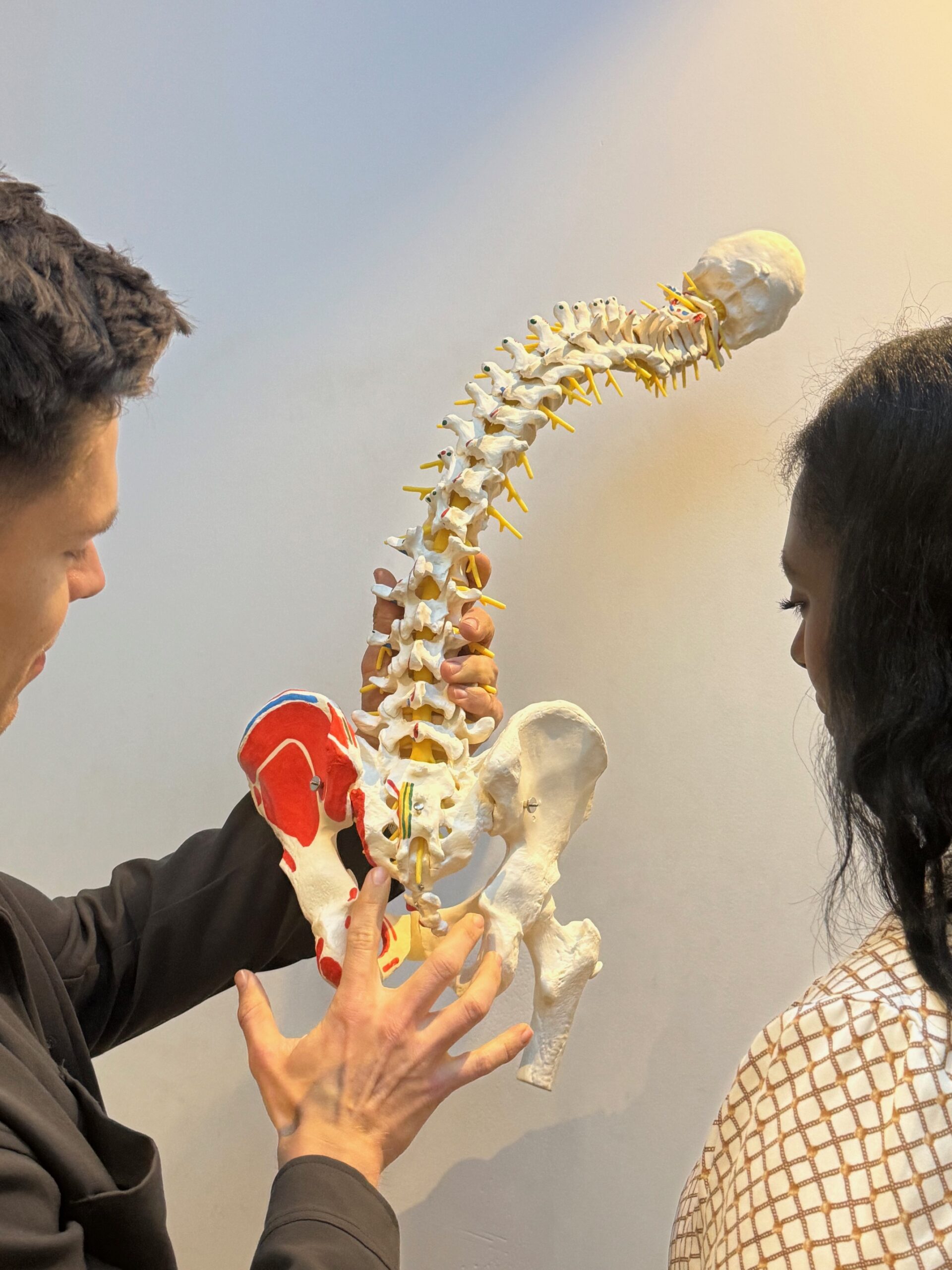Understanding and Treating Sacroiliac Joint (SIJ) Stiffness
Published on
17 Oct 2025


Written by
Jacob Stefanoff
Senior Physiotherapist
Call us on: (03) 9975 4133
If you’ve been experiencing lower back pain, buttock discomfort, or difficulty with certain movements, your sacroiliac joint (SIJ) might be contributing. The SIJ connects your spine to your pelvis and plays a key role in how your body moves and supports weight. A common issue we see in physiotherapy is a stiff and compressed SIJ, where the sacrum (the bone at the base of your spine) gets “stuck” in a certain position — something we call counter-nutation.
How does the SIJ move?
- The SIJ normally moves only a small amount — about 4 degrees of rotation — but that small movement is crucial for healthy function.
- The joint moves around a point at the second sacral vertebra (S2).
- The top part of the sacrum can tilt forward (nutation) or backward (counter-nutation).
- The bottom part can tilt slightly side to side, but this sidebending mainly happens when the sacrum is tilted forward (nutated).
When the ilium (the large pelvic bone) is rotated:
- If it rotates forward, the sacrum tends to tilt backwards (counter-nutation).
- If it rotates backwards, the sacrum tilts forward (nutation).
How we assess your pelvis
Your physiotherapist will carefully assess your pelvic alignment to figure out what’s going on. We check:
- Whether the front of the pelvis (ASIS) is higher, lower, or forward compared to the other side.
- Whether the pubic bone is higher or lower on one side.
- The position of your sitting bones (ischial tuberosities).
- Whether certain muscles near the sacrum are tight or in spasm, as this gives clues about how your sacrum is positioned.
How we treat a stiff, compressed SIJ
The good news is that physiotherapy can help restore normal movement and ease your discomfort. One of the techniques we use is gentle mobilisation:
- A small wedge is placed under the pelvic bone on the side we’re treating.
- We stabilise your pelvis and apply a gentle pressure at the right spot on your sacrum to encourage healthy movement.
- This technique is often combined with lumbar spine mobilisation, muscle releases, hip joint mobilisation, and sometimes dry needling to ease tight muscles and improve overall function.
What can you expect?
SIJ mobilisation is usually comfortable and can provide relief when done as part of a broader treatment plan. Your physiotherapist will also guide you on exercises and posture habits to help prevent the problem from recurring.
If you’re dealing with persistent lower back or pelvic pain, don’t hesitate to book an appointment. Early treatment can make a big difference.
About the Author
Jacob Stefanoff — Senior Physiotherapist
Jacob has a very caring and empathetic nature and uses a holistic approach to rehabilitation. He has worked in multiple private practice settings in Sydney along side Olympic Sports Specialist Physiotherapists with professional athletes in their sporting fields. Jacob has experience with complex chronic pain, nerve pain and experience with complex lumbar spine, pelvic and hip conditions.
Back to blog home